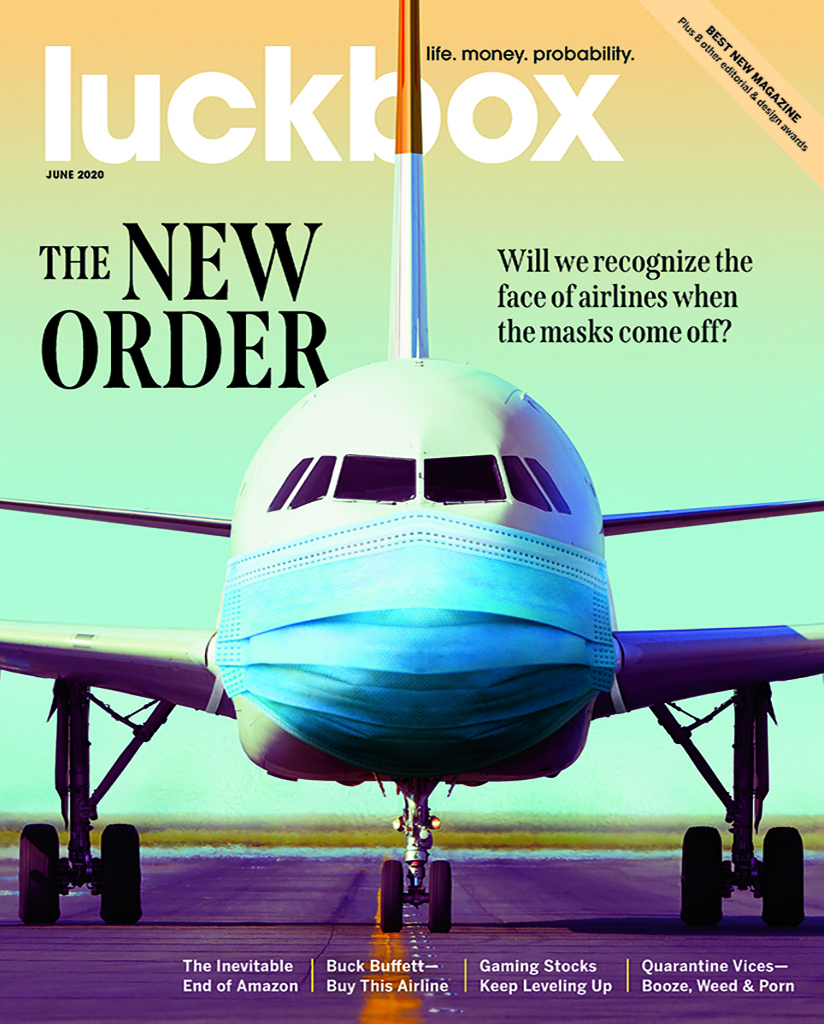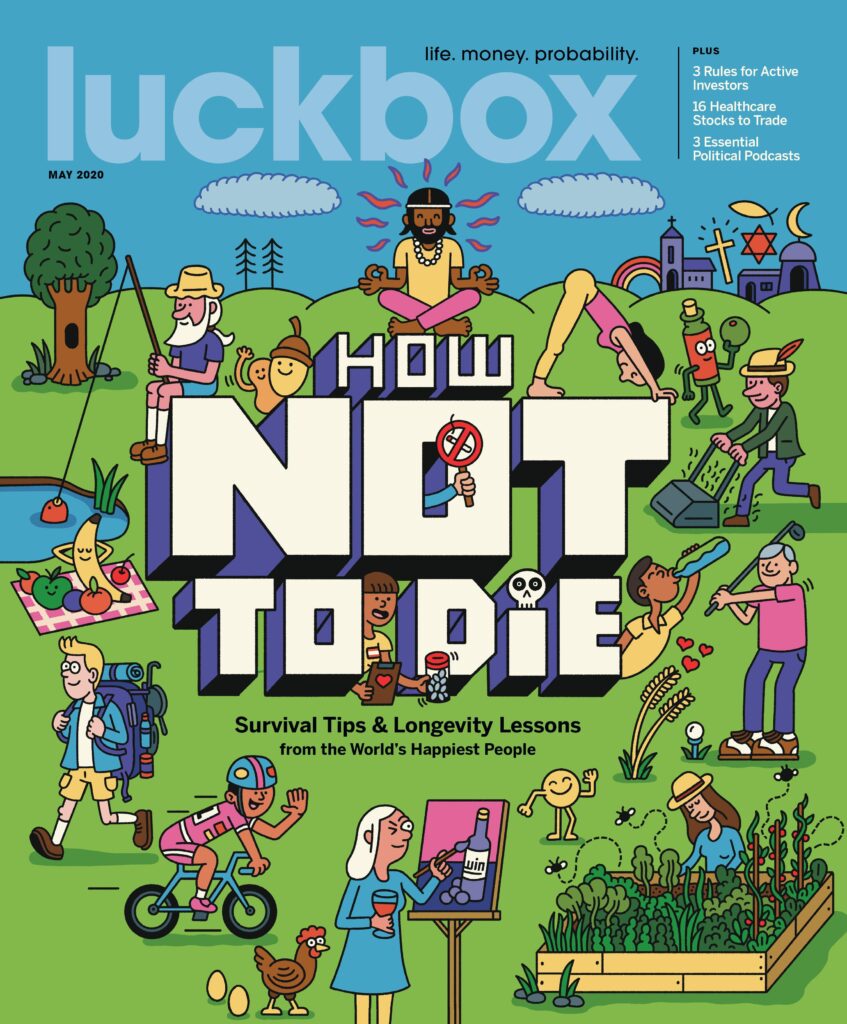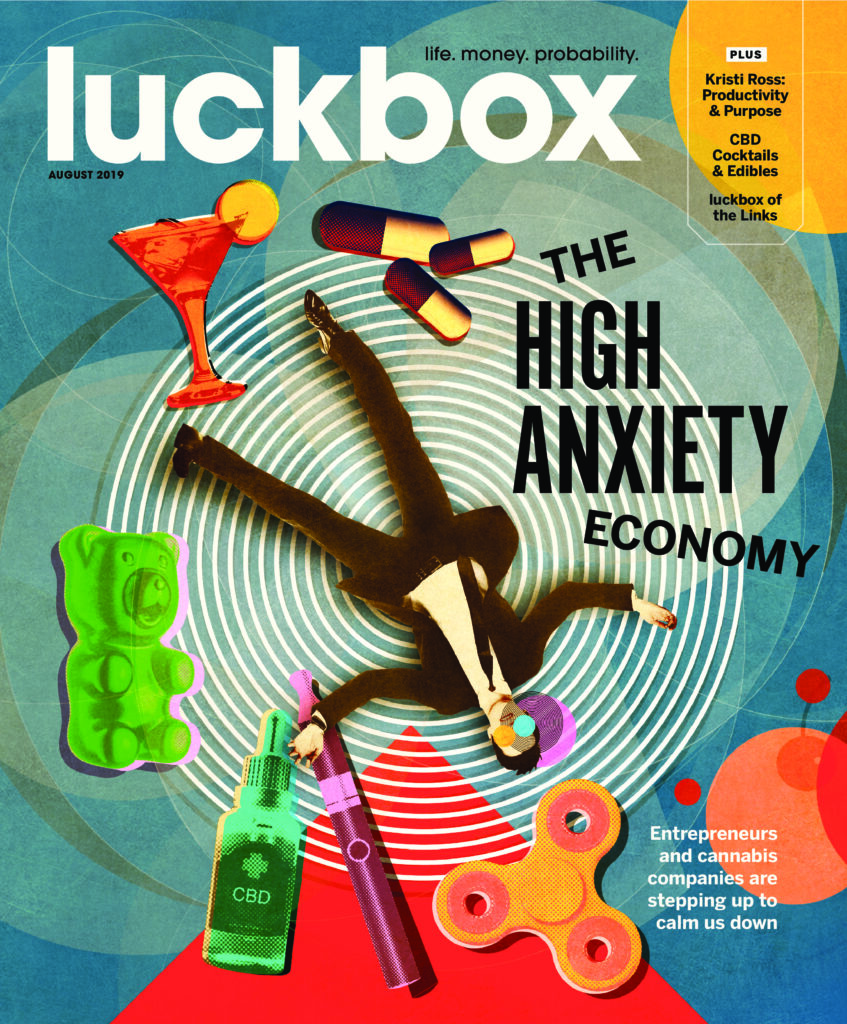Using print strategically to increase the odds of reader engagement.
By Jeff Joseph
Print serves as an essential component of the Luckbox magazine audience-acquisition strategy. And when our opportunities to put print copies in front of people change — as they did when the pandemic canceled all live events and closed stores — we have to adapt.
Luckbox, a magazine for active investors, lives by its tagline: “The control freak’s guide to life, money, and probability.” Every month, we publish articles that educate, entertain, and inspire securities traders — whether they dabble in the financial markets part time or devote themselves to investing full time.
As a magazine brand, we are platform agnostic. Besides publishing in print and online, we reach our audience via email, social media, and podcasts. Our goal is to put actionable advice into readers’ hands in whatever form they wish to consume it.
But when it comes to generating new subscribers, the print magazine rises above the rest as a critical tool. It’s our most convincing emissary. And while the COVID-19 pandemic has caused us to shift temporarily from our strategy of relying on bookstores, hotels, and cigar lounges to spread the word about the publication, doing so has reaffirmed the power and effectiveness of that strategy. Let me explain.
The Luckbox target audience is predominantly aspirational, entrepreneurial, or professional alpha types. They’re self-directed investors with a median age of 40 and above-average income. The linchpin of our reader acquisition strategy is to place a print copy of the magazine — with compelling articles teased on an attention-grabbing cover — in front of these people. Not just anyone. These people. If they’re intrigued by our cover, they’re going to pick up the magazine and open it. From there, they’ll get a taste of the editorial product, and we’ll introduce them to our brand and increase the chance of winning them over as subscribers.
Pre-pandemic, we also focused on events as a way to boost circulation. Say there’s a large conference with an audience that matches our demographic. For us, that might be a financial conference, a cryptocurrency conference, an investment conference or a technology conference — to name a few. We’ve sent complimentary copies to those events, one for each attendee, into the thousands of copies.
And to ensure the connection with potential readers, we’ve planned cover stories relevant to the audience. “The High AnxietyEconomy” issue (August, pictured), for example, focused on CBD and THC products and companies, and we distributed it at a large cannabis conference. We provided our e-sports and gaming issue to attendees at a gaming technology conference.
If the event is synergistic for us, it’s worth planning four or five months out to achieve this editorial alignment. In fact, part of our editorial approach is to eschew the legacy editorial calendar in favor of shorter-term planning that allows flexibility, contextual issue placement, and, ultimately, timeliness.
To ensure good placement at an event, we offer the host organization ad space in the magazine to promote their organization or their next event. It’s a way to thank them for incorporating our copies. Our experience is that these organizations are more than happy to provide their attendees with quality editorial content aligned with their industry focus.
Although the cost of complementary placements is offset by the print subscribers we acquire as a result, that is not our only key performance indicator in this effort. We also offer free digital subscriptions at these events to gather email addresses. That way, we can send content to interested readers on an ongoing basis and, ideally, monetize the relationship through conversion to print or in other ad-based engagements.
Then the pandemic brought a grinding halt to live, in-person events. We’ll go back once events resume, but in the meantime, we have shifted our focus to other strategic placements.
We put complimentary magazines in rooms at Marriott Autograph hotels. We’re in cigar lounges across the country, private tennis and racquet clubs, and in 900 private jets. When airline travel resumes, we’ll be back in the American Airlines and United Airlines airport lounges in the 10 largest domestic airports. These placements target a market that’s consistent with our audience’s psychographic and demographic profile. And it leverages a contextual opportunity. What do people do in a cigar lounge? Watch TV, smoke a cigar, and pick up the magazine in front of them. If you have a good-looking magazine with articles that resonate with a targeted audience, you create an opportunity to connect.
When people come on board as readers and subscribers, it’s our job to retain them. That’s why we keep a finger on the pulse of their needs. We survey our readers every month, asking 10 questions via Survey Monkey. The questions enable readers to comment on specific articles and offer criticism. We solicit information on everything from political opinions and consumer habits to what they’d like to see in upcoming issues. This back-and-forth exchange has guided our editorial ideation and double-checked our instincts. To encourage reader engagement, we publish some feedback in our letters section in print, and the rest makes it into an email we send to all of our subscribers.
From my perspective, print is essential. There will always be people who prefer the medium, and, as a publisher, I want to provide our content on whatever platforms people want to consume it. But beyond that, print can introduce prospective readers and subscribers to our brand in a way that is more compelling, immediate, tactile, engaging, and convincing than any other format. Print increases our probability of reader engagement. Complementary print placements increase our probability of digital conversion and/or paid print subscriptions. Print is simply a critical leg of the stool. As a publisher, I can’t make this brand work without it.
Jeff Joseph is editorial director and publisher of Luckbox. Connect via joseph@pagesthemagazine.com.




